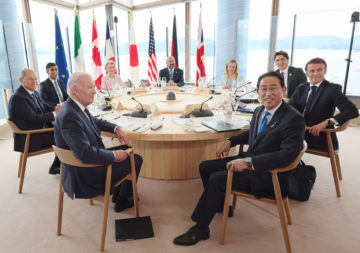 Patrick Bigger and Federico Sibaja in Phenomenal World:
Patrick Bigger and Federico Sibaja in Phenomenal World:
A brewing sovereign debt crisis threatens to engulf as many as sixty-one countries in debt distress over the coming year. Aid flowing from the global North—which carries the most responsibility for the atmospheric carbon stock—to the global South—which bears the brunt of its impacts—must be dramatically scaled up. Despite professing the need for global climate solutions, governments in the more prosperous countries have responded to this threat with lassitude and indifference, as evidenced by the slate of unambitious, unserious, and demonstrably ineffective responses issued from their recent summits. Meanwhile, democratic deficits within the institutions of multilateral governance show the difficulty of grappling with the pronounced asymmetries in our international financial architecture. Even the most ambitious reforms slated for discussion at week’s Summit on a New Global Financing Pact in Paris fail to confront the fundamental role of debt in that asymmetrical architecture.
There is a growing consensus among global South governments, civil society organizations, and even some staff within the twin pillars of the Bretton Woods Institutions (BWIs), the World Bank and International Monetary Fund, that a thoroughgoing overhaul is required to contend with twenty-first century problems. New governance of the institutions, new trade conditions, and a new debt architecture should all be part of reforms that acknowledge that the main barrier is not access to finance, but who sets the terms and defines the processes of the current economic framework.
More here.
